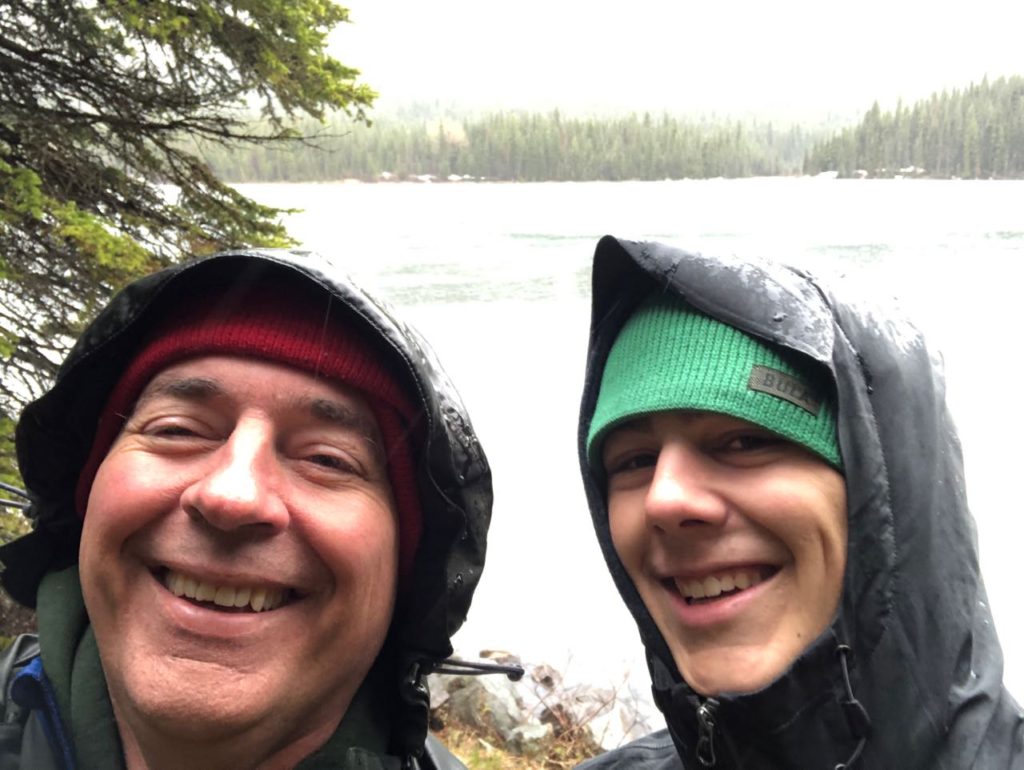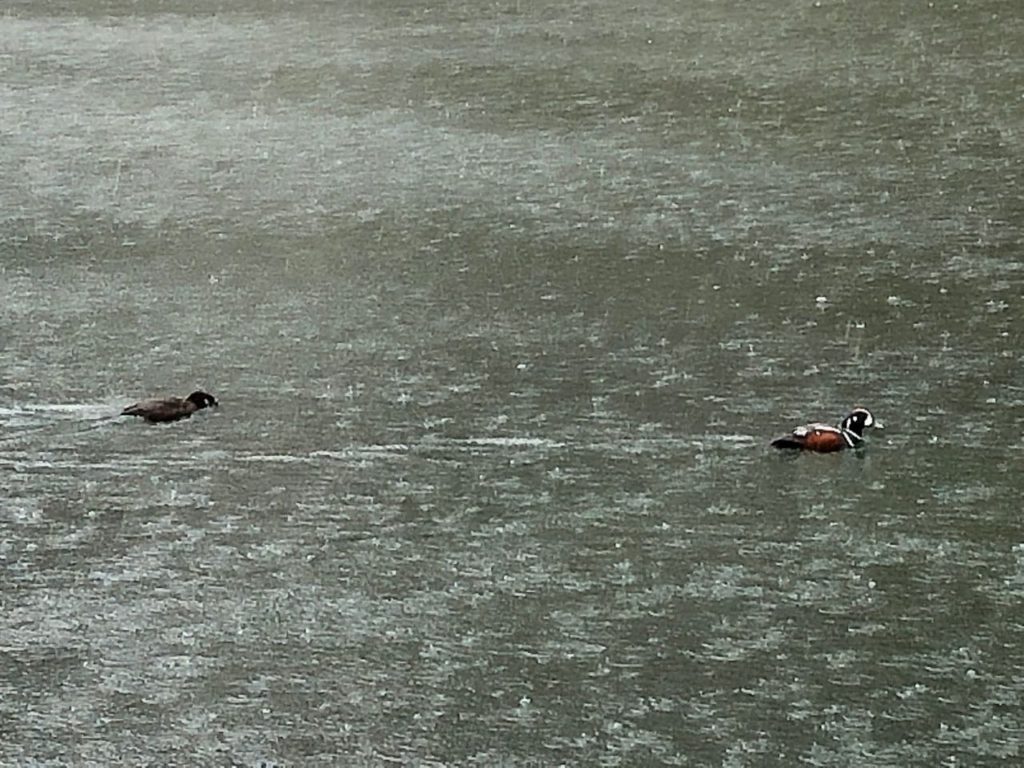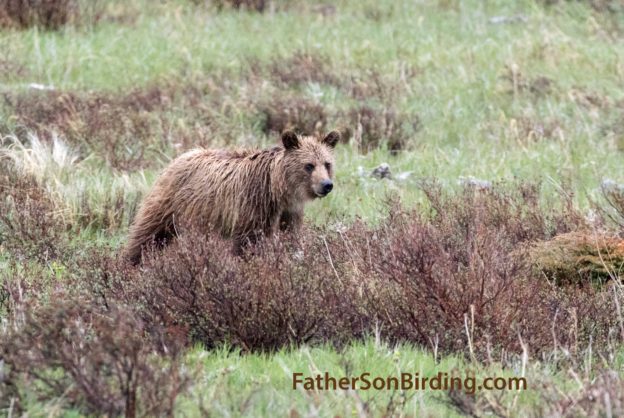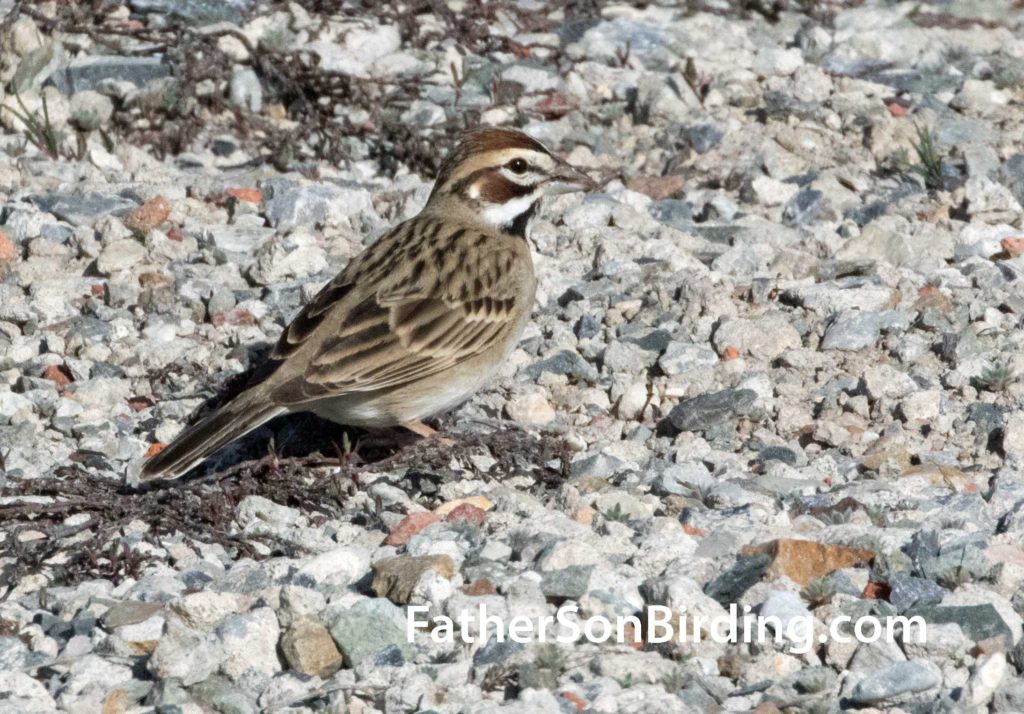If you are enjoying these posts, please share them with friends, family, and other birders. Also, be sure to subscribe by filling out the form down in the right-hand column. Tweet-Tweet!
When my dad and I stepped out of our car at Swiftcurrent Lake in Glacier National Park we were welcomed with a barrage of raindrops. Water fell from every imaginable place, and small puddles had formed in the miniature valleys of the parking lot. Thankfully, both of us had our raincoats, but for some reason during the packing stage of the trip we had looked at our rain pants and said, “Nah. We won’t need them.”
As it turns out, we did.
We did not have any other places we planned to bird today, however, so we decided to brave the monsoon and see if any birds were dumb enough to be out in the rain like we were. Swiftcurrent Lake was known for having great birds, including Dusky and Spruce Grouse, Boreal Chickadee, Tennessee Warbler, Varied Thrush and Olive-sided Flycatcher.

After being greeted by a wet Gray (or Canada) Jay in the parking lot, the first quarter-mile along the lake shore did not yield any living creatures. We listened for the grouse that the park rangers had said were here, but either the rain masked the sounds, or, more likely, the grouse were taking shelter from the storm. At one point we did have an encounter with two thrushes, but they uncooperatively disappeared into the brush, leaving us to wonder at their identities.
We came to an intersection and turned right to hike over the small glacial moraine to Lake Josephine. There, we walked out onto the dock and scanned the water, looking for any avian action. By the shore off to the left, I thought I saw a splash, so I focused my binoculars on it. After a minute, a slate-gray, blue and cinnamon-colored waterfowl with distinctive white markings popped up—a male Harlequin Duck!

We stalked closer to the duck and its mate, marvelling at our luck while at the same cursing ourselves for not bringing our cameras. The two ducks continued to dive, oblivious to the rain and completely fearless of us. Soon, they floated closer, and passed three meters from where we stood, gracing us with their incredible but subtle beauty.
We spent thirty minutes watching the ducks, wet but happy, then decided to book it back to the car. We started the long drive back to East Glacier, but stopped beside Swiftcurrent Lake when we saw people staring up at the mountain beside the road. We raised our binoculars, and sure enough, spotted a herd of at least twenty Bighorn Sheep staring back at us from their rocky vantage points.
“Wait a minute,” said my dad, “There are three more much higher up. Wait, no! Those are Mountain Goats!”

We watched them for a second, then continued driving. We had just seen two of the Glacier Park Big Four—the rare, large mammals most commonly seen in the park. The other two were Grizzly Bear and Moose, but I doubted we’d see those.
I was wrong. Just a little ways past the goats and sheep, we spotted a pair of stopped pickup trucks, their drivers gazing at the meadow right off the road. Two wet but content-looking Grizzly adolescents dug for roots in the brambles, unafraid of us! Well, you know what they say: When it rains, wildlife pours!






